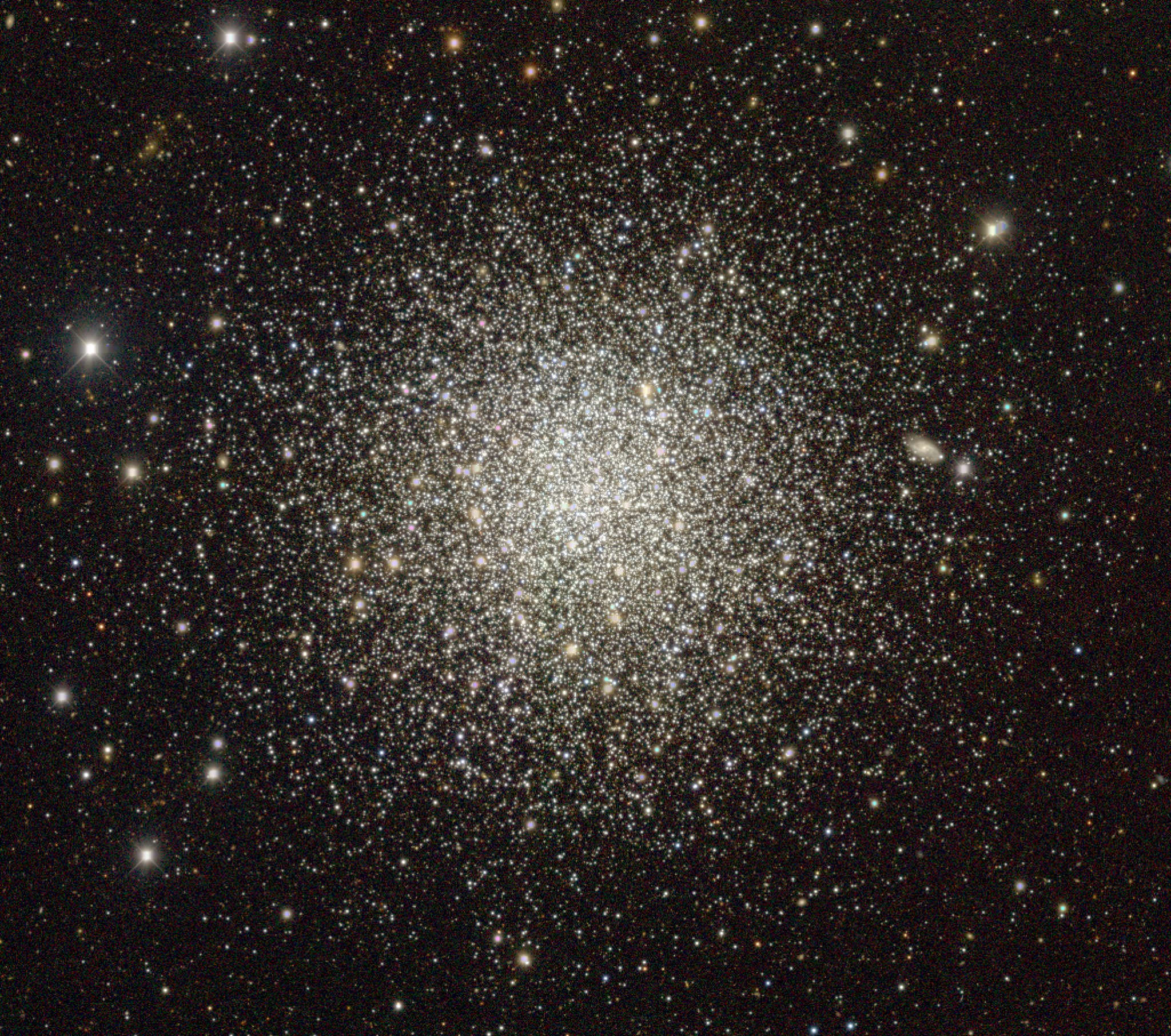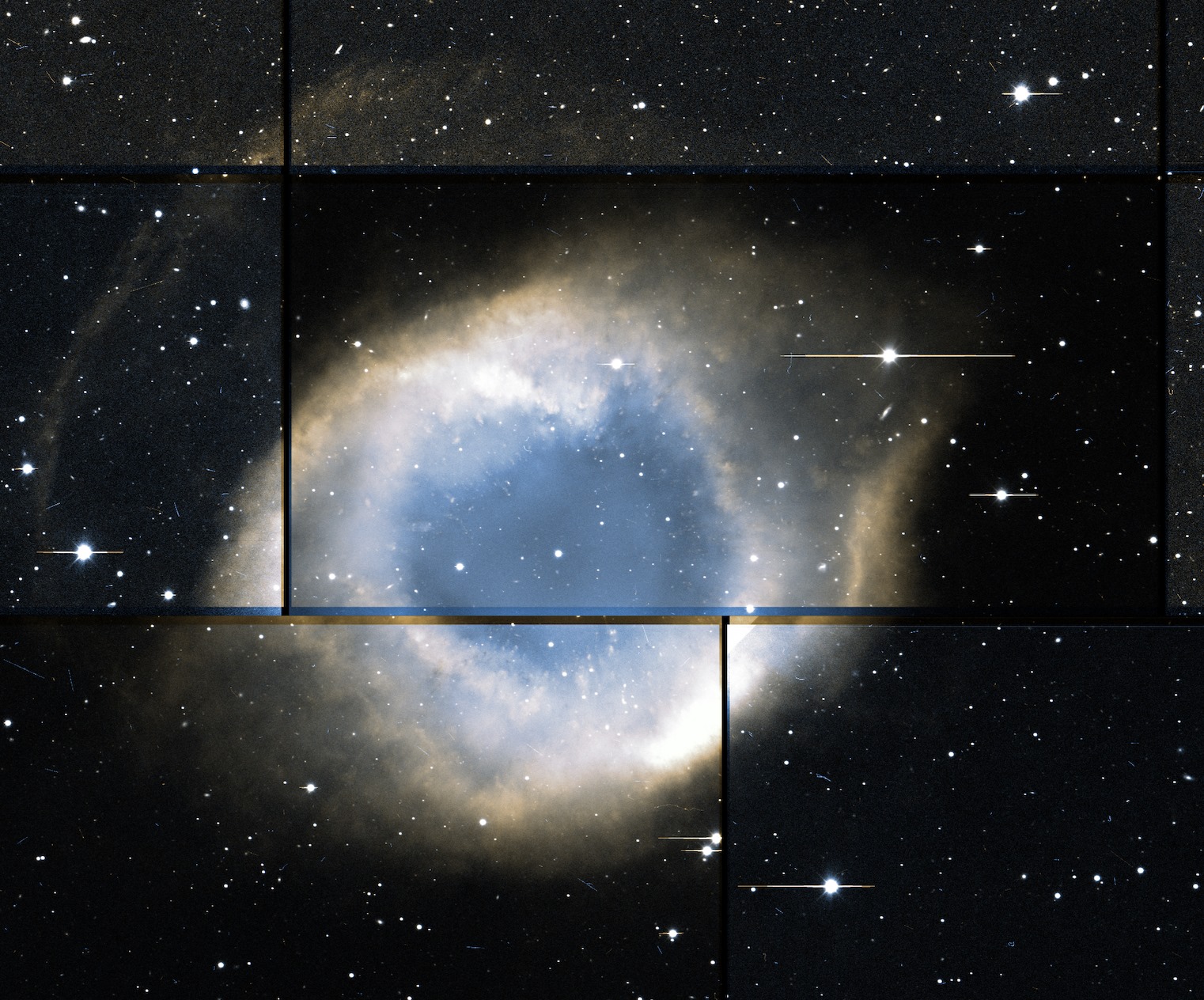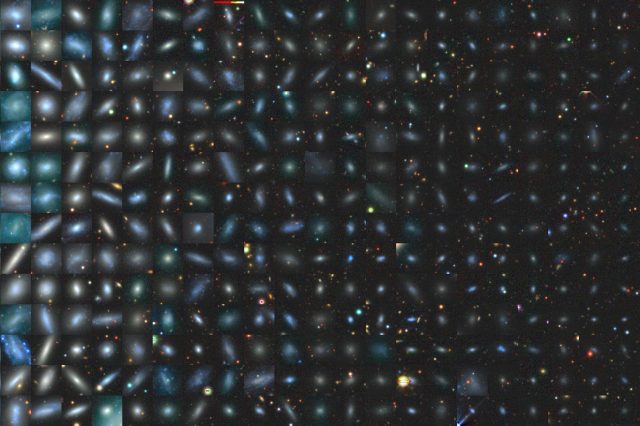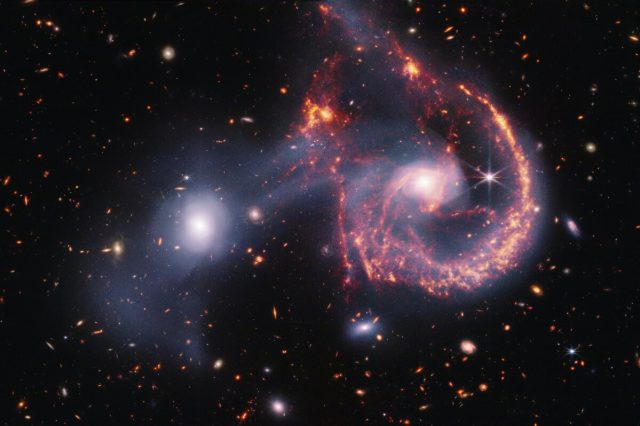The images include galaxy clusters, stars, comets, asteroids, dwarf planets, supernovas, and comets. Around 2.5 billion astronomical objects have been captured in the images.
For exploring the universe, its distant galaxies, stars, planetary nebula, and now even black holes, humankind has at its disposal a number of different tools. Some of these tools — observatories — are located in different parts of the world, like Chile, where SO’s Paranal Observatory is stationed. But different parts of the world are home to different observatories. We then have space telescopes that search the cosmos far from the atmospheric pollution of our planet.
Another interesting observatory in Chile, high atop the Andes mountains, is the so-called Dark Energy Camera. DECam is mounted on the 4-meter Victor M. Blanco Telescope, located at the Cerro Tololo Inter-American Observatory (CTIO) in Chile. DECam, short for Dark Energy Camera, is a large camera on the Victor M. Blanco Telescope that has replaced the previous prime focus camera. There are three main components of a camera: mechanics, optics, and CCDs.
The wonders of the Dark Energy Camera
Earlier this year, I posted an article about the power of the Dark Energy Camera. I wrote this article describing and showing some of the true power of the DEC. Scientists used the Dark Energy Camera to capture a mind-bending 570-megapixel photograph of a distant star-forming region called the Lobssrer nebula, but this is just a small example of the true efficiency of the observatory. More than one million exposures of the southern sky have been captured by the Dark Energy Camera atop a mountain in the Chilean Andes. The images include galaxy clusters, stars, comets, asteroids, dwarf planets, supernovas, and comets. Around 2.5 billion astronomical objects have been captured in the images, revealing unprecedented views of the cosmos. Originally built for the Dark Energy Survey at the Fermi National Accelerator Laboratory, the impressive 570-megapixel Dark Energy Camera has been seeing stars for ten years now.
Deep-space data are used by the international DES collaboration to study dark energy, which accelerates the expansion of space. In addition to the Dark Energy Survey, which is now analyzing data gathered between 2013 and 2019, the powerful piece of equipment has also been used in other experiments. Further astronomical observations and surveys have also been conducted using the camera by other research groups. Using the Dark Energy Camera, 15 stellar photos were created.
(Please note we will not post all 15 images in this article but will link to the DEC site where you can see all of them in their full resolution)
One-eighth of the sky was imaged with the Dark Energy Survey, which captured light from galaxies as far away as 8 billion lightyears. This image shows one of ten “deep fields” that were repeatedly scanned. Scientists are able to see distant galaxies and faint objects by returning to certain parts of the sky and collecting light at different wavelengths. Supernovae can be hunted for and calibrated using these deep fields.
A stunning view of a comet? No problem
It is not uncommon for the Dark Energy Survey to look at objects that are millions or billions of lightyears away, but sometimes closer objects are seen as well. Comet Lovejoy was observed traveling 51 million miles away from Earth in 2014 by the Dark Energy Survey. There are 62 CCDs used by DECam in this image, each of them a sophisticated sensor designed to capture light from distant galaxies.

Sixty-nine million lightyears away from Earth is the spiral galaxy NGC 1566. The processing of each DECam photo results in a unique photo. Using five filters, the camera records different wavelengths of light (between 400 and 1,080 nanometers) and can produce color images.
The DECam photo shows more than 180,000 stars scattered across an area roughly twice the size of the full Moon. Also available is a version that encompasses more of the Milky Way’s bulge. Dark energy is typically studied in the opposite direction from our galaxy because our galaxy blocks out faraway galaxies necessary for studying dark energy-so the Dark Energy Survey directs its telescope in a different direction.

The spiral galaxy NGC 681 appears edge-on from our vantage point on Earth. About 66.5 million light-years away, the galaxy is also known as the Little Sombrero Galaxy. A Hexapod aligns DECam’s many optical elements between exposures to keep distant objects as sharp as possible.

The biggest optical lens weighs 388 pounds and measures more than three feet wide in addition to its five light filters. Due to their proximity to the Milky Way, the Large and Small Magellanic Clouds are valuable places to study star formation. Survey of the Magellanic Stellar History, or SMASH, used the Dark Energy Camera to capture deep looks at our galactic neighbors.
NGC 1515, a spiral galaxy in the Dorado Group, is shown at the center of this image. Cosmologists have found that galaxies do not form random clusters in the universe but instead form a sort of cosmic web when studying the large-scale structure of the universe. Dark Energy Survey maps the structure of the universe and how it has evolved over time in the most precise way.
A stunning globular cluster

There are about 28,700 lightyears between the Earth and NGC 288, a globular cluster of stars. Its center is dominated by stars whose gravitational pull binds them together. The Dark Energy Survey looks at distant galaxies and galaxy clusters to better understand dark energy, though globular clusters are an interesting way to study stars and the Milky Way. Several dwarf galaxies have been discovered by the Dark Energy Survey, and the data has been used to limit the size of potential dark matter particles. There are around 100 million stars in this irregular dwarf galaxy, IC 1613, located approximately 2.4 million lightyears away. The Milky Way galaxy contains between 100 and 400 billion stars, whereas dwarf galaxies are small and faint by astronomical standards.

Six hundred fifty lightyears from Earth lies the Helix Nebula (NGC 7293). As seen here, it extends over several of the CCDs of the Dark Energy Camera. In reality, planetary nebulae are the remains of stars that appeared round and sharp-edged like planets. The outer layers of a dying star have ejected, leaving behind a white dwarf surrounded by gas. A similar fate awaits our own sun in billions of years. About 11 million lightyears away lies the spiral Sculptor Galaxy. A total of 5000 square degrees of the sky has been imaged by the Dark Energy Survey across more than 500 million galaxies. A camera was pointed, and exposures were captured automatically by DES software to optimize observations. In addition to considering weather conditions, moonlight, and recent imaging, the software could factor in what part of the sky was overhead.
A hundred million stars make up the wispy shell surrounding the elliptical galaxy NGC 474 (center). In this zoomable version, you can see a spiral galaxy to the left and thousands of other, more distant galaxies in the background. Approximately one gigabyte of information is contained in each DECam image. Over the course of one night, the Dark Energy Survey would take several hundred images, resulting in 2.5 terabytes of data.
Check out the entire collection of images by clicking here.
Have something to add? Visit Curiosmos on Facebook. Join the discussion and participate in awesome giveaways in our mobile Telegram group. Join Curiosmos on Telegram Today. t.me/Curiosmos





